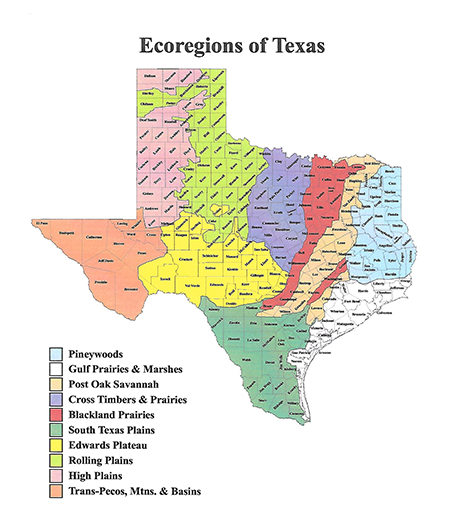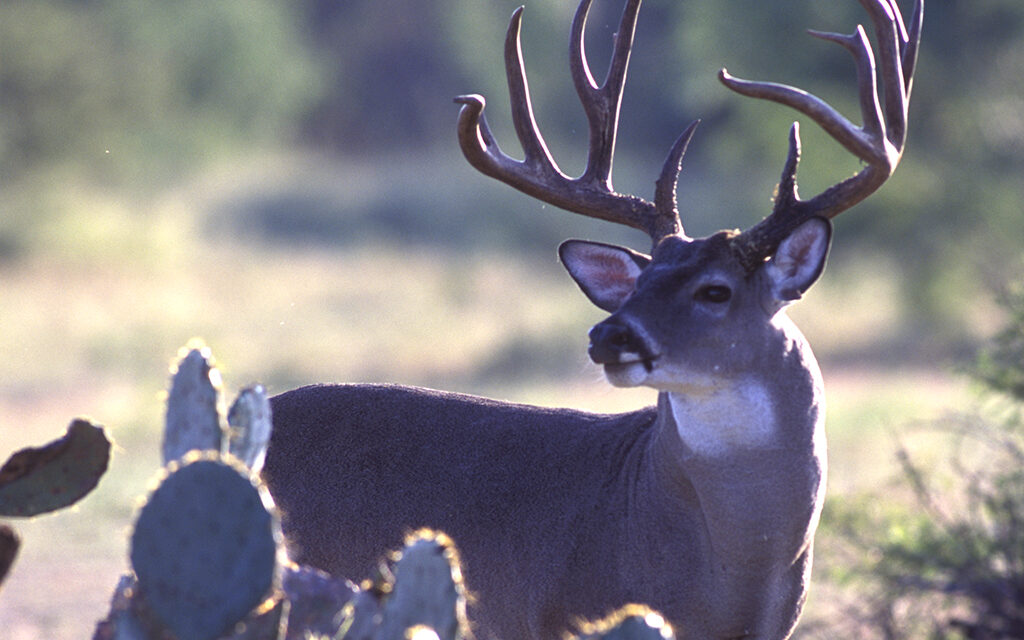by John Jefferson
Just as last year, the whitetail forecast is being spread over two columns — too much information for one.
This week’s covers the Cross Timbers, Post Oak, and South Texas regions. Last week’s covered the Hill Country (Edwards Plateau), Rolling Plains, and Pineywoods. See map.
TPWD white-tailed deer program leader, Alan Cain, reported in late summer that the drought has affected weights, antler size, and fawn crops statewide. All three are lower than in 2021. East Texas fared a little better.
Then, the rains began. I asked Cain if that changed his forecast.
“The recent rains certainly improved range and habitat conditions but came too late to provide any meaningful impact on antlers or fawn crops,” he replied. He added that new vegetation could adversely affect early season hunting around feeders. In addition to obscuring deer, new growth in good habitat makes feeders less appealing to deer. But with five million deer in Texas, he expects a good harvest!
Post Oak Savannah
 Highest density of deer is along I-10 from San Antonio to Houston. Densities decrease toward the north with lowest being north of I-20, east of Dallas. Sex ratio is skewed at 4.3 does per buck. Average antler quality is expected and 2021 survey showed 66 percent of harvested bucks were 3.5 or older. Cain expects fewer bucks 3.5 – 5.5 years old due to low fawn crops in 2017 and 2019. Hunter success in 2021 was 61 percent but may be higher this season.
Highest density of deer is along I-10 from San Antonio to Houston. Densities decrease toward the north with lowest being north of I-20, east of Dallas. Sex ratio is skewed at 4.3 does per buck. Average antler quality is expected and 2021 survey showed 66 percent of harvested bucks were 3.5 or older. Cain expects fewer bucks 3.5 – 5.5 years old due to low fawn crops in 2017 and 2019. Hunter success in 2021 was 61 percent but may be higher this season.
Cross Timbers
This North Texas region has the second highest deer population, just behind the Hill Country. Greatest concentrations are in the central part. Consistent fawn crops have led to good age structure through all age classes, however, above-average fawn crops in 2016 and 2017 indicate more bucks this season in the 4.5-5.5 ages. It could be a rewarding season for hunters. The harvest survey showed 67 percent of bucks brought to ice being 3.5 years old or older. Hunter success was 69%. Cain thinks it could be higher this year. Average Boone and Crockett scores of 5.5-year-old bucks places the Cross Timbers close to South Texas’ and the Rolling Plains’ scores.
South Texas Plains
Some years, several northern states and Texas’ Rolling Plains produce a few larger bucks than the South Texas Brush Country. But there is probably no region in America that consistently harvests as many trophy-antlered bucks as South Texas. Rich, native, high protein vegetation, a long growing season, and extensive game and habitat management are prominent reasons. Savvy hunters who harvest only does and mature bucks is another. Regional lease prices produce discriminating hunters.
Deer populations increased in the western portion. Although parts of the region have high doe-to-buck ratios, the regional ratio is 2 does per buck. Hunter success in 2021 was 76%. Cain expects a higher harvest but below average antlers due to drought. But this is South Texas; there’ll still be some terrific bucks taken.
JJ






